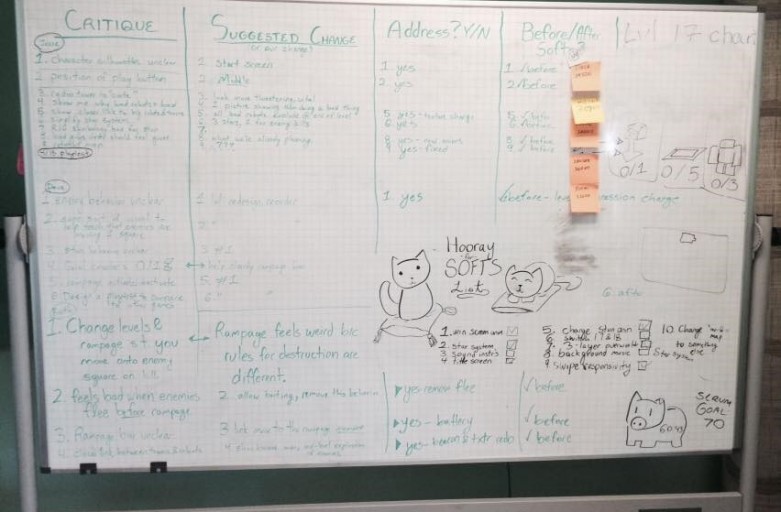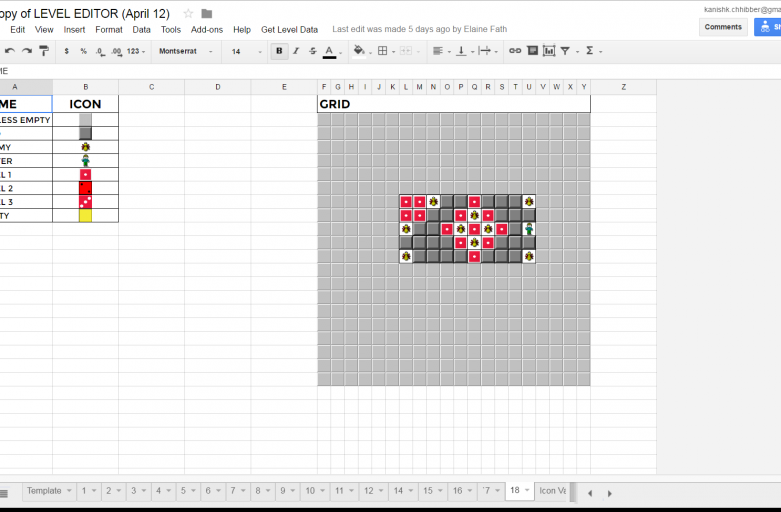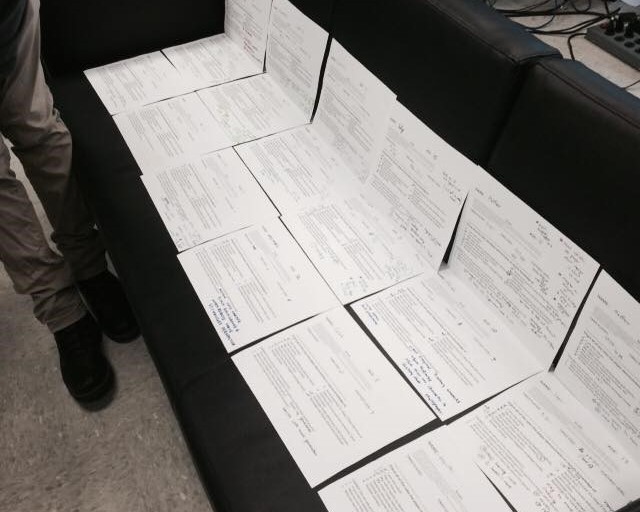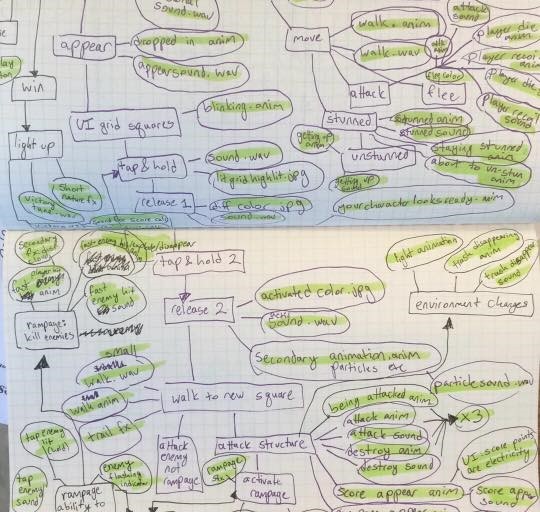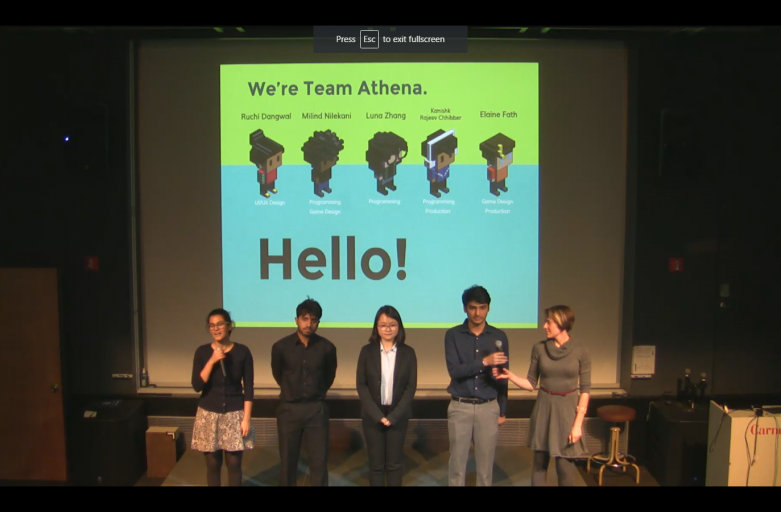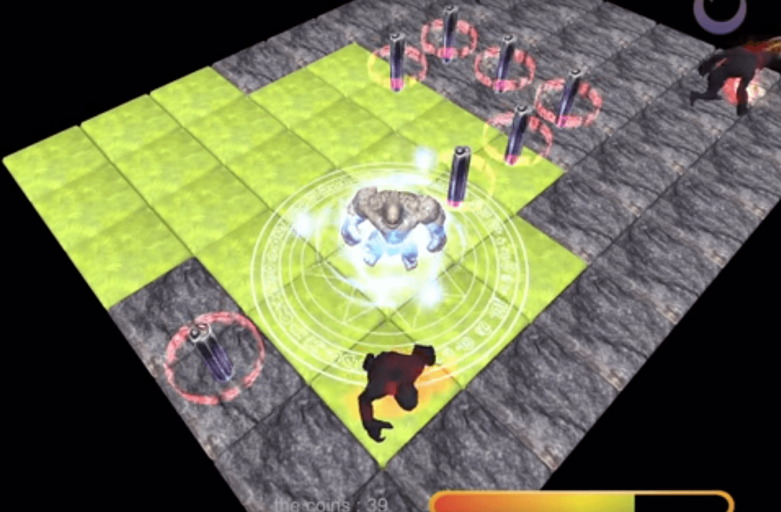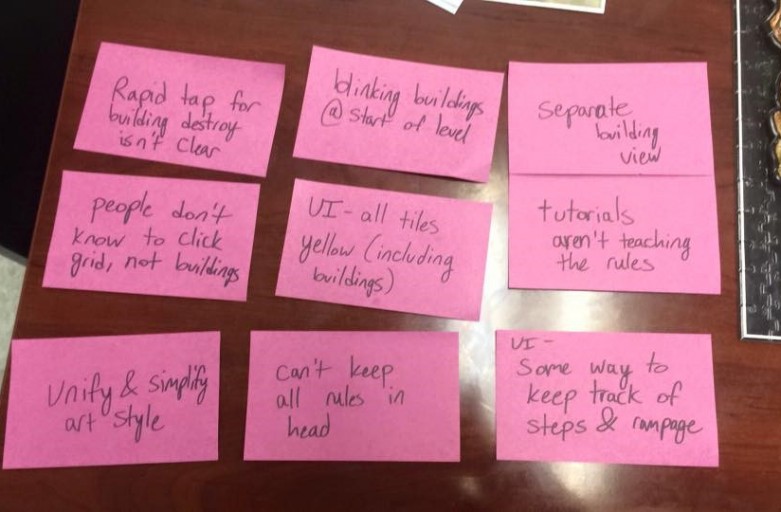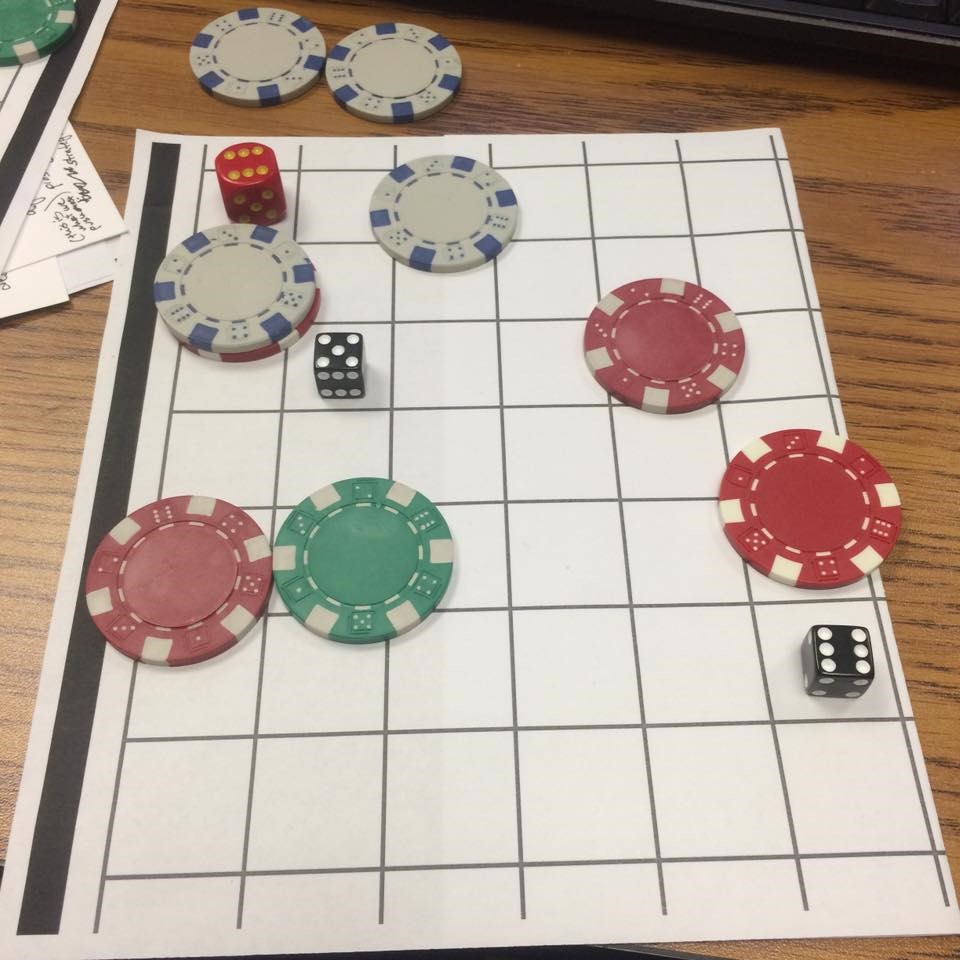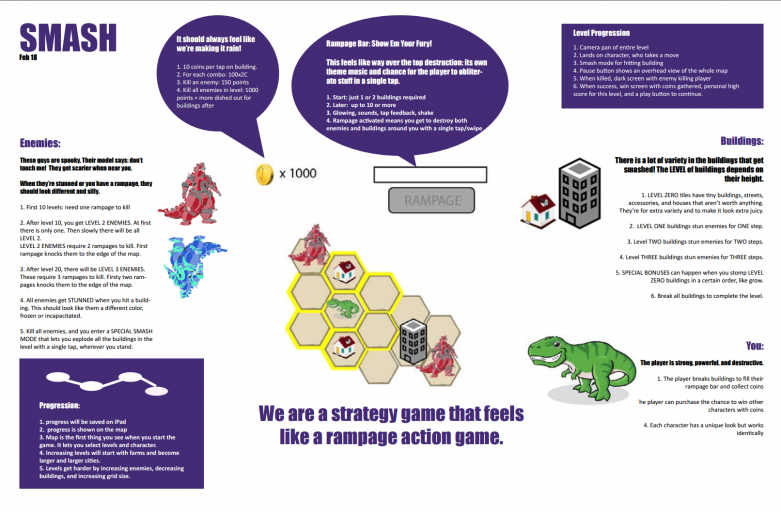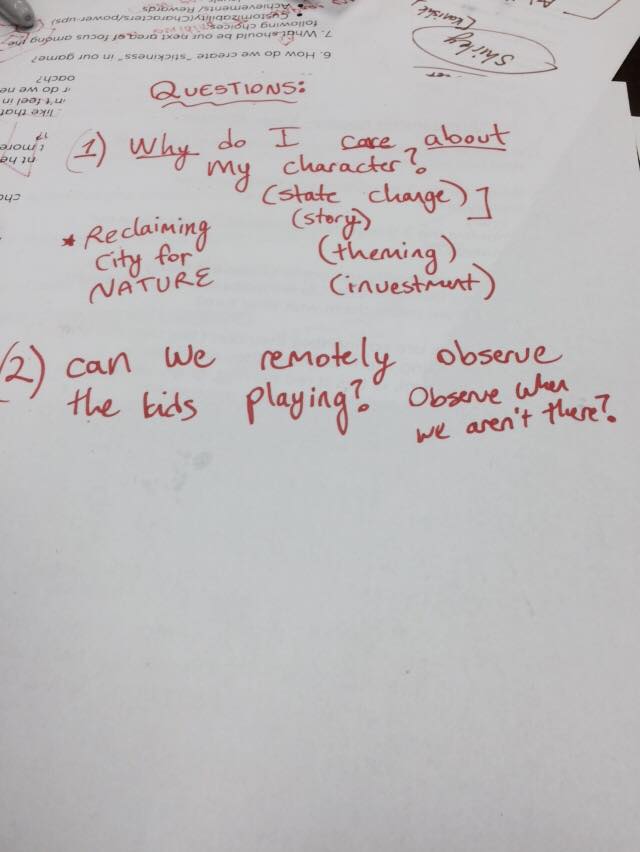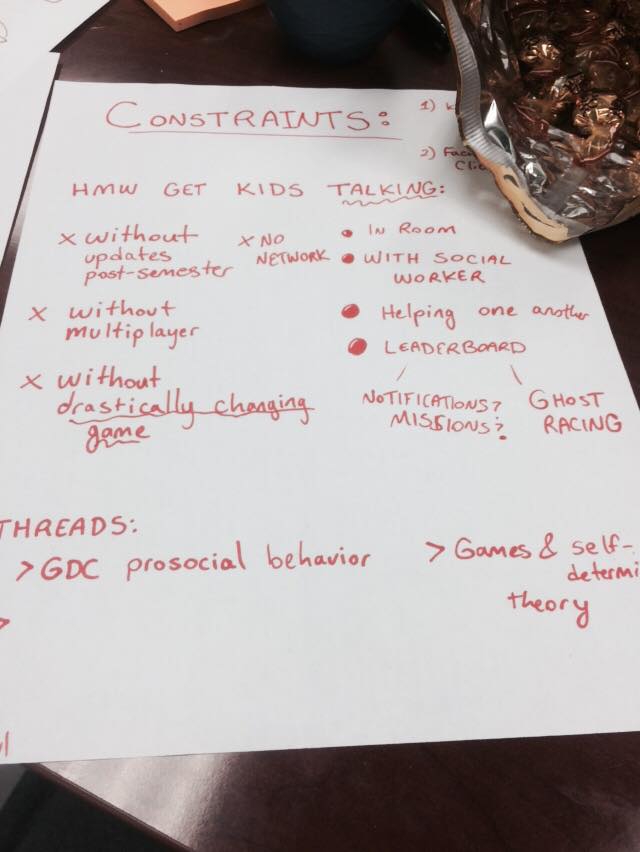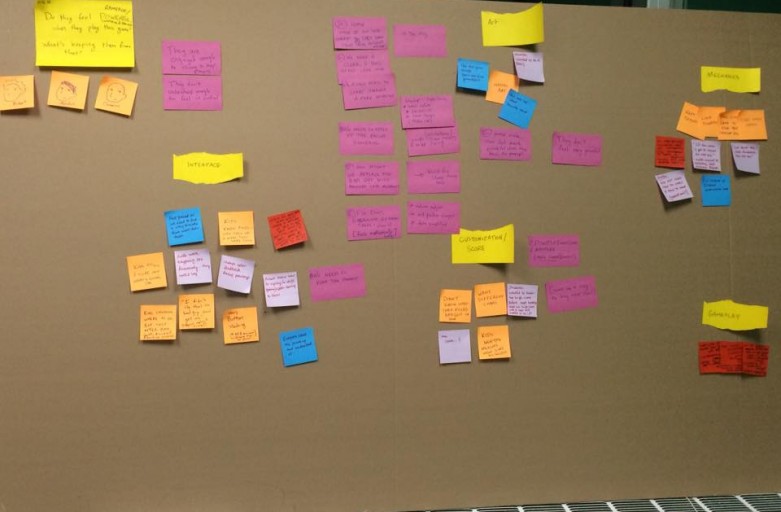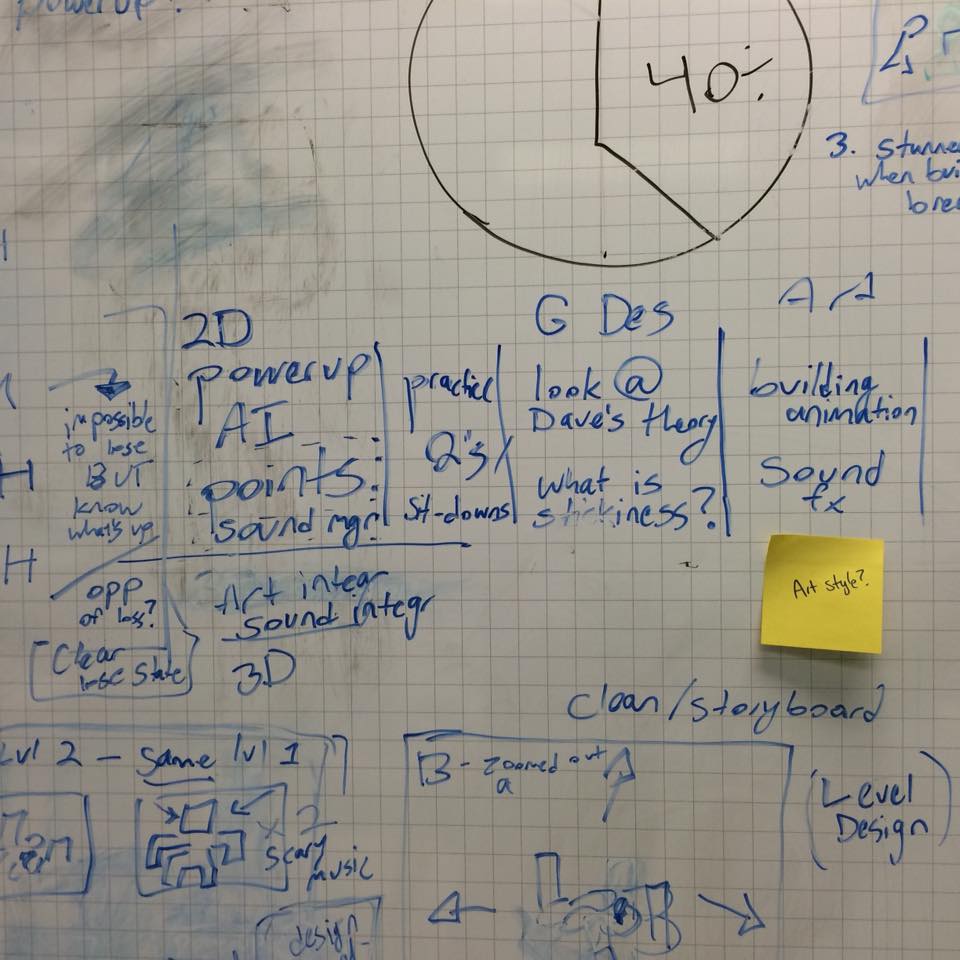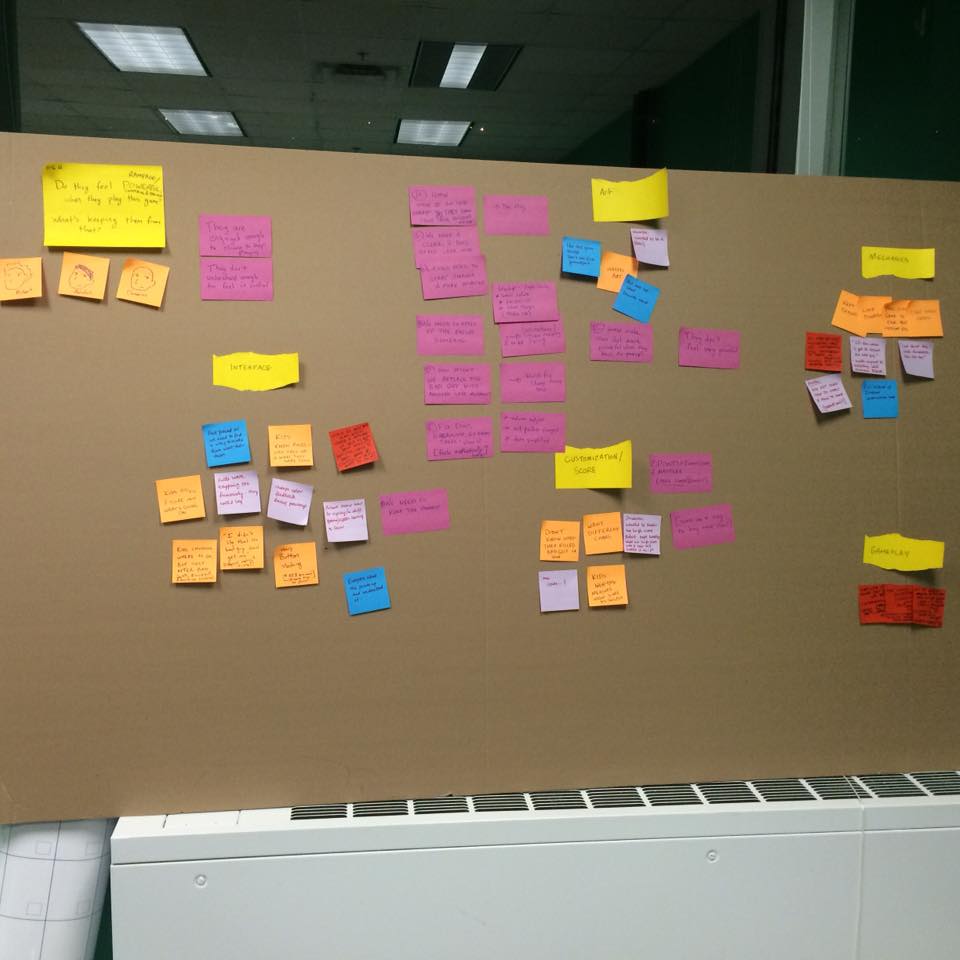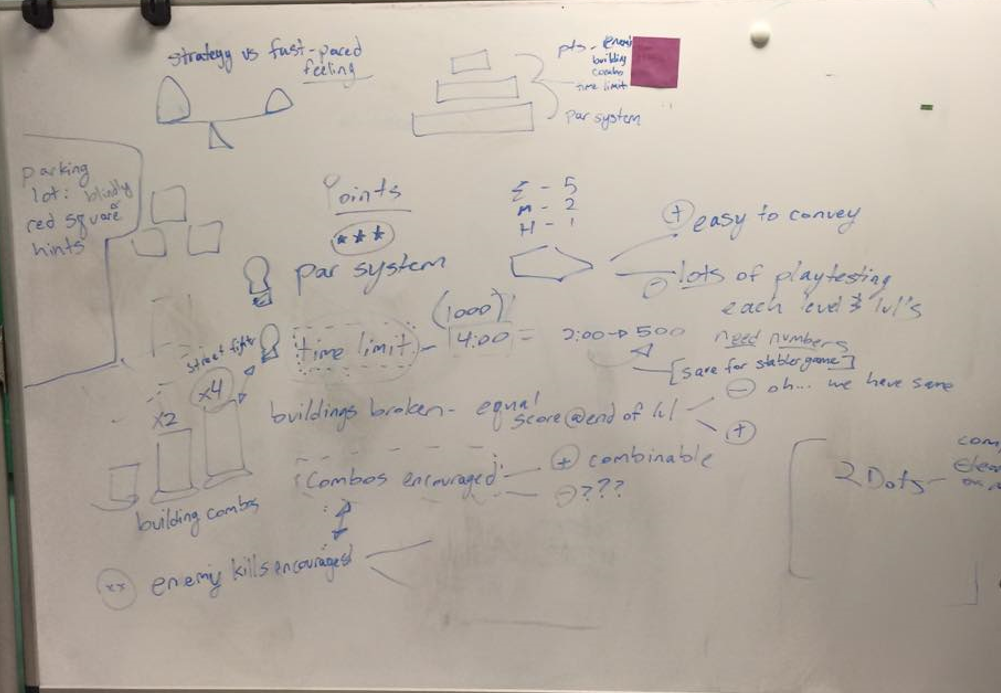Monday began with the team getting the room and iPads ready for soft opening. Softs opening is a 4-5 hour time slot wherein various faculty and in some cases industry professionals, come and play our game and give feedback as well as constructive criticism. All the faculty visited the ETC, Jesse Schell, Chris Klug, Shirley Yee and Shirley Saldamarco, Dave Culyba etc came and took the opportunity to play our game. Based on the feedback we received, after softs, the team came together and unpacked all the minute details and body language we noticed during the playtests. We also made a large burn down list based on the notes we got and unpacked it together so that the team could decide the final two-week sprint. The team also bonded by playing the Level 17 of the game and competed for the highest score.
On Tuesday, the producers worked on the promo video which needed to be delivered by the end of the week. Footage from the past playtests with students from Colonial School, ETC playtests days and ETCers was used along with an interview from Audrey about the overview and possible impact of the game. Ruchi worked on churning out UI assets required for the overworld and the programmers worked on UI implementation and game performance optimization.
On Wednesday, the designers worked throughout the day on level design coming up with 12 more levels that needed to be added to the previously existing 18 levels in the game. The entire team did research on further sounds needed and Luna worked on the environment fixing the texture and placement. Further UI assets were implemented and integrated and the color picker feature was integrated into the game. Continued polishing, cleaning of code and optimization was worked on for the performance of the game.
On Thursday, the team met with Mike to plan the last playtest in Colonial School and push as many assets and features in the game as possible. All the designed levels were integrated and implemented into the game and the statistics for each level in terms of system design was calculated and added into the game. The producers continued to edit the video and the programmers finished off most of the UI and all the final parts of the game were implemented and tested for performance and bugs.
On Friday, the team only worked on polishing the UI and solving any bugs that were found in the game. The game was built on the iPad for the final playtest on Monday in Colonial School.
